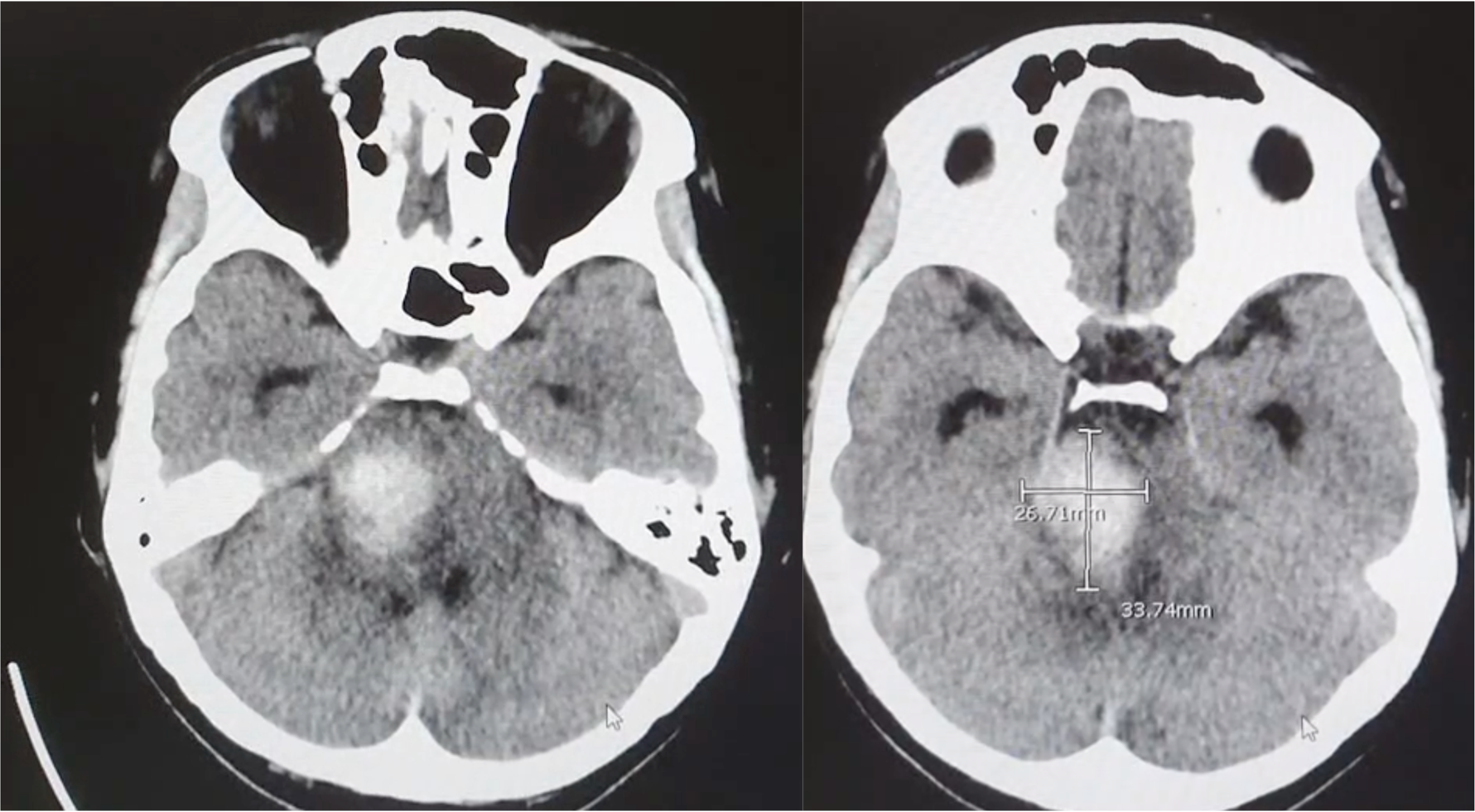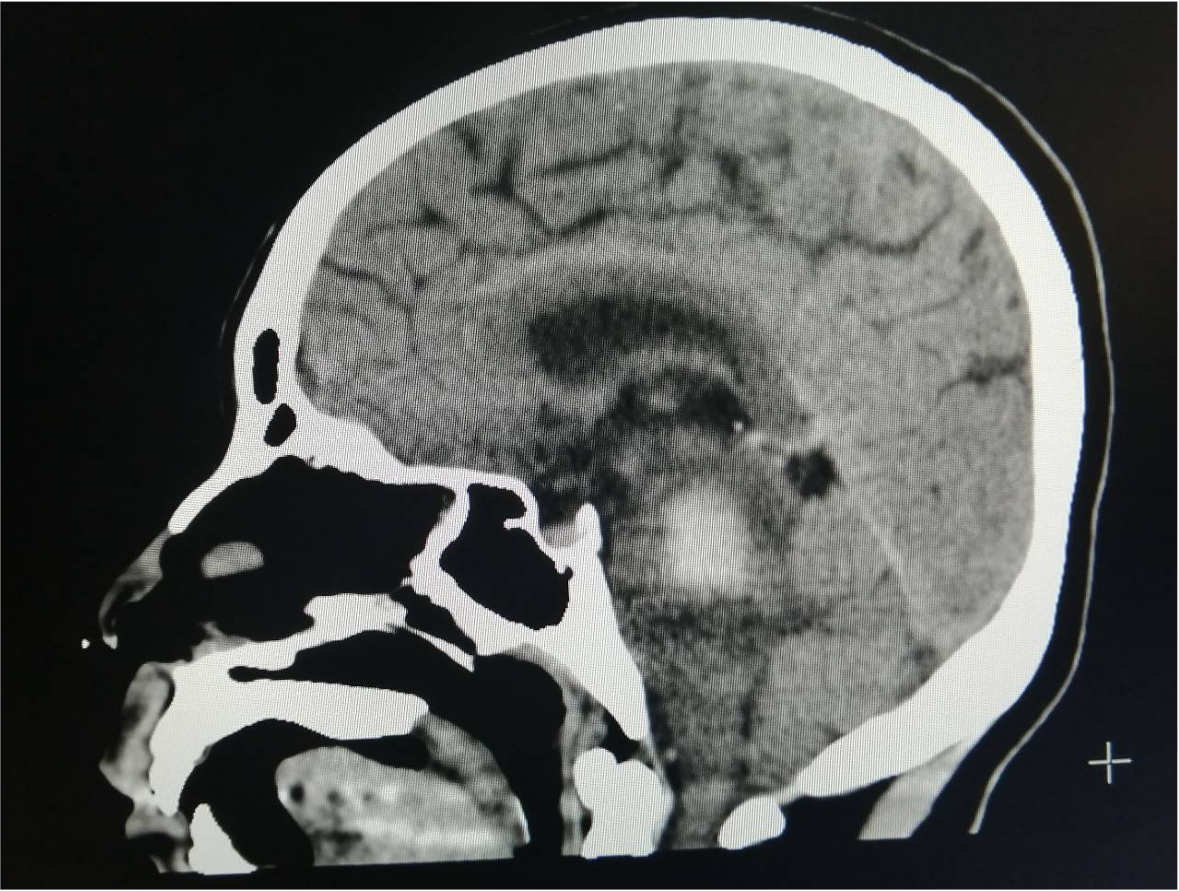Objective: To describe a rare and unique manifestation of cavernoma-induced brain injury, specifically the occurrence of monocular ocular bobbing with unilateral Holmes tremor. It aims to provide insights into potential neurological pathways involved in ocular movement disorders and contribute to medical knowledge.
Background: Ocular bobbling is characterized by a spontaneous downward jerk of both eyes followed by a slow return to mid-position that should be distinguishable from downbeat nystagmus and ocular myoclonus. Ocular bobbling is typically observed bilaterally, and monocular ocular bobbling is a rare occurrence.
Method: This case report describes a previously healthy 39-year-old female who presented to the emergency department with thunderclap headache and subsequently fell unconscious. On admission, she was found to have a comatose consciousness level, left hemiparesis, and total ophthalmoplegia of the right eye. Seven days after admission, she began experiencing right arm involuntary movement and left monocular ocular bobbling, which was accompanied by right-upper extremity Holmes tremor in the setting of left hemiparesis.
Video 1. Her left eye showed rapid downward and slow upward excursions with no spontaneous or reflex horizontal eye movements. The right eye remained motionless and the right pupil was dilated and non-reactive. A rest tremor, worsening with posture and additionally intensified with action involving her right proximal arm.
Results: Brain CT-scan confirmed a ruptured cavernoma at the right superior and middle cerebral peduncle, right-sided midbrain and pons with pressure effect to prepontine cistern and forth ventricle [figure1,2]. The distinctive monocular bobbling observed in this patient was attributed to a lesion in the right-sided midbrain to pons, involving right oculomotor and trochlear nuclei, paramedian pontine reticular formation (PPRF), cerebello-thalamic and cerebello-olivary circuits.
Conclusion: The occurrence of monocular ocular bobbing in combination with unilateral Holmes tremor in our patient is a unique manifestation that is indicative of a ponto-cerebello-rubral lesion that is contralateral to the affected eye. While monocular ocular bobbing is a rare occurrence, it may be observed when there is a co-existing ocular motor palsy that affects the typical presentation.
References: 1. Susac JO, Hoyt WF, Daroff RB, Lawrence W. Clinical spectrum of ocular bobbing. Journal of neurology, neurosurgery, and psychiatry 1970;33:771-5.
2. Mehler M. The clinical spectrum of ocular bobbing and ocular dipping. Journal of neurology, neurosurgery, and psychiatry 1988;51:725-7.
To cite this abstract in AMA style:
S. Virameteekul, P. Panyakaew,, R. Bhidayasiri. Monocular Ocular Bobbling with Holmes Tremor Due to Ruptured Cavernoma [abstract]. Mov Disord. 2023; 38 (suppl 1). https://www.mdsabstracts.org/abstract/monocular-ocular-bobbling-with-holmes-tremor-due-to-ruptured-cavernoma/. Accessed April 20, 2025.« Back to 2023 International Congress
MDS Abstracts - https://www.mdsabstracts.org/abstract/monocular-ocular-bobbling-with-holmes-tremor-due-to-ruptured-cavernoma/


